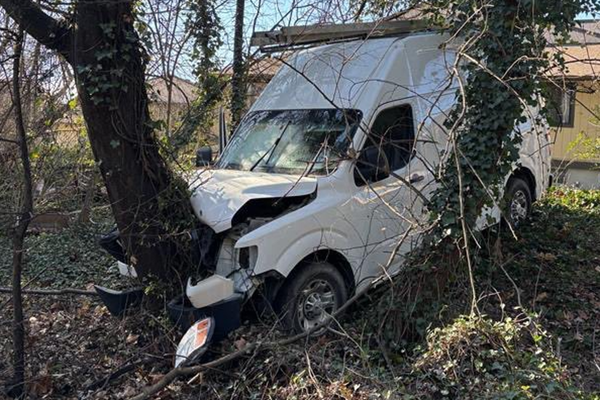The Australian government has announced an Oprah Winfrey-style emissions target for 2035. It has tried to promise (nearly) everyone a prize.
By choosing a target range of a 62% to 70% cut compared with 2005 levels – based on long-awaited advice from the Climate Change Authority and its chair, Matt Kean – it has opted for a political solution.
The range is extraordinarily wide. At the bottom end, it is likely to dampen criticism from business organisations that have argued for less action. At the top end, it nods to a campaign that has argued that the target must include a number that starts with a “7” – that is, in the 70s – if it is to have any claim at being serious about the scale of the problem.
The criticism will come anyway. The press releases from some climate organisations condemning the decision started to arrive before Anthony Albanese had finished his opening remarks at Thursday’s press conference.
It is easy to understand why. The reality is the range means the minimum target is 62%. That’s well below what scientists say Australia should do to play its part in keeping alive the goals agreed as part of the 2015 Paris agreement – particularly that the world should keep striving to limit global heating to 1.5C.
That goal appears all-but out of reach – the world is already about 1.3C hotter than pre-industrial times, and the rise isn’t stopping yet. But the commitment stands, and every fraction of a degree of warming will matter. Experts have found Australia should be making at least a cut of 75% by 2035 to play its part – possibly significantly more.
The range is also below what the authority last year described as “ambitious, but achievable” – a 65%-75% cut. An obvious question is: what has happened since then to justify the lower goal?
The answer is complicated, and difficult to quickly pull apart. The government released nine dense reports on Thursday to back-up its commitments and they will take time to work through. But we know the authority was asked to consider not only climate science, but the economics, technological developments, social impacts of the changes required and the international landscape. Kean says it carried out bottom-up modelling to see what was possible.
Its conclusion is basically that there are great opportunities in green development, but also that emissions reductions are difficult: harder than many people realise. There have been some bumps on the road over the past year, including challenges in rolling out large-scale renewable energy. Green hydrogen – a potential replacement for fossil gas – has not kicked on as fast as was hoped.
The authority assumes emissions can be cut roughly in half over the next 10 years. It expects renewable energy can continue to surge, and provide up to 93% of electricity by 2035, and that half of all cars bought will be electric. It has taken a conservative approach in assessing what would be possible across some other parts of the economy.
Not all experts will agree with this assessment. The Guardian has reported on several independent analyses that have found deeper cuts are technologically and economically possible now. Some, such as those in energy efficiency and electrification, could reduce not only pollution, but household costs.
Some advocates argue much sharper reductions again would be possible if the government treated the climate crisis as the genuine emergency it is – an approach that is sometimes described as moving to a “war footing”. Under this line of thinking, huge amounts of funding, capital and labour could be thrown into green developments and reforestation, guaranteeing people work while forcibly shutting down polluting industries.
Where these expert positions primarily differ is on what is socially possible. Put another way, what pace of change is the public prepared to put up with before there is pushback that would disrupt the entire project and elect a Coalition government hell-bent on abolishing the climate policies Labor has introduced?
There is pretty decent evidence that a majority of Australians say they would support stronger climate action. They said so at this year’s federal election. There is not clear evidence to suggest most people see the challenge as being equivalent to Australia being at war. The authority has previously argued that trying to make more than a 75% cut could lead to “significant and costly economic and social upheaval”.
The picture is further complicated by the shaky international picture. Four years ago, after the election of Joe Biden in the US, major developed economies were more or less pulling in the same direction on climate, albeit not fast enough. Australia under Scott Morrison was an outlier at the bottom of the pack.
That is no longer the case. The UK is in a political mess, but still has an ambitious goal – equivalent to a 78% cut on Australia’s 2005 baseline. But Europe is internally split as it argues over whether it lands on its collective 2035 goal. Japan, Canada and New Zealand all have weaker 2035 targets than Australia. The US under Donald Trump has abandoned the field.
None of this is justification for Australia setting a 62% target. The scientific evidence is that countries such as Australia should be aiming for net zero as soon as they can. The Paris agreement committed the country to aim for its “highest possible ambition”.
Almost uniquely on the international stage, Albanese could decide to dedicate his prime ministership to making the case for a rapid change on climate. He has a stonking majority and a progressive crossbench that wants deeper cuts. If not now, when?
But the prime minister is famously cautious. He has less to say on climate than some of his predecessors, and leaves the heavy-lifting to his minister, Chris Bowen. He has no real plan to stop supporting new and expanded fossil fuel developments that add to local pollution and contribute far more overseas.
Rather than have the PM promote the national climate risk assessment – a remarkable document laying out a shocking picture of what lies ahead – the government timed its release on Monday for while he was out of the country.
The reality is the 2035 target is just a very broad goal. What matters now is the policies that come in behind it. Kean said on Thursday he was hopeful the government could “overachieve” on its target range.
That alone sets a test. Will the government aim for 62% and be satisfied with being better than the opposition? Or will it back measures that could reach 70% – or more?
Adam Morton is Guardian Australia’s climate and environment editor







